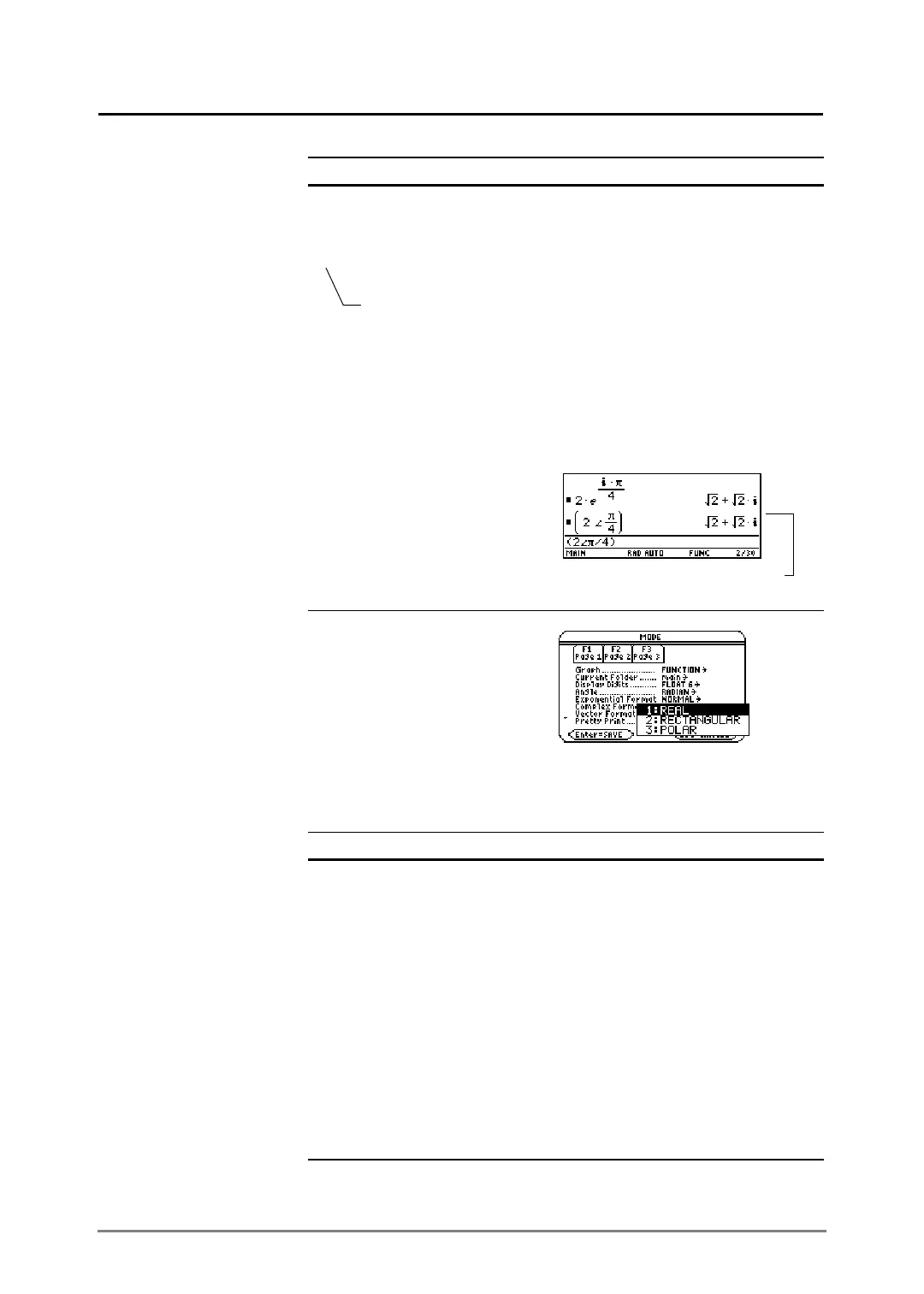Appendix B: Technical Reference 911
To enter the: Do this:
Polar form
r
e
i
q
– or –
(roq)
Substitute the applicable values or variable
names for r and q, where q is interpreted
according to the Angle mode setting.
TI.89 Titanium:
j [R] ¥ s 2 ) ¥ Ï d
– or –
c j [R] 2 ’ ¥ Ï d
Voyage™ 200:
R 2 s 2 ) Ï d
– or –
c R 2 ’ Ï d
For example:
Use 3 to set the
Complex Format mode to
one of three settings.
You can enter a complex number at any time, regardless of the Complex
Format mode setting. However, the mode setting determines how results
are displayed.
If Complex Format is: The TI-89 Titanium / Voyage™ 200:
REAL Will not display complex results unless you:
¦ Enter a complex number.
– or –
¦ Use a complex function such as cFactor(),
cSolve(), or cZeros().
If complex results are displayed, they will be
shown in either a+bi or r
e
i
q
form.
RECTANGULAR Displays complex results as a+bi.
POLAR Displays complex results as:
¦ r
e
i
q
if the Angle mode = Radian
– or –
¦ (roq) if the Angle mode = Degree
Important: Do not use the
r
e
i
q
polar form in
Degree
angle mode. It will cause a
Domain error
.
Note: To get the
e
symbol,
press:
TI
.
89 Titanium:
¥ s
.
Voyage™ 200:
2 s
Do not simply type an
alphabetic e.
Tip: To get the
o
symbol,
press
2 ’
.
Tip: To enter
q
in degrees
for (r
oq
), you can type a
¡
symbol (such as 45
¡
). To
get the
¡
symbol, press
2 “
. You should not use
degrees for r
e
i
q
.
Complex Format
Mode for Displaying
Results
Note: You can enter
complex numbers in any
form (or a mixture of all
forms) depending on the
Angle
mode.
Results are shown in rectangular
form, but you can select polar form.
Parentheses are
required for the
(roq) form.

